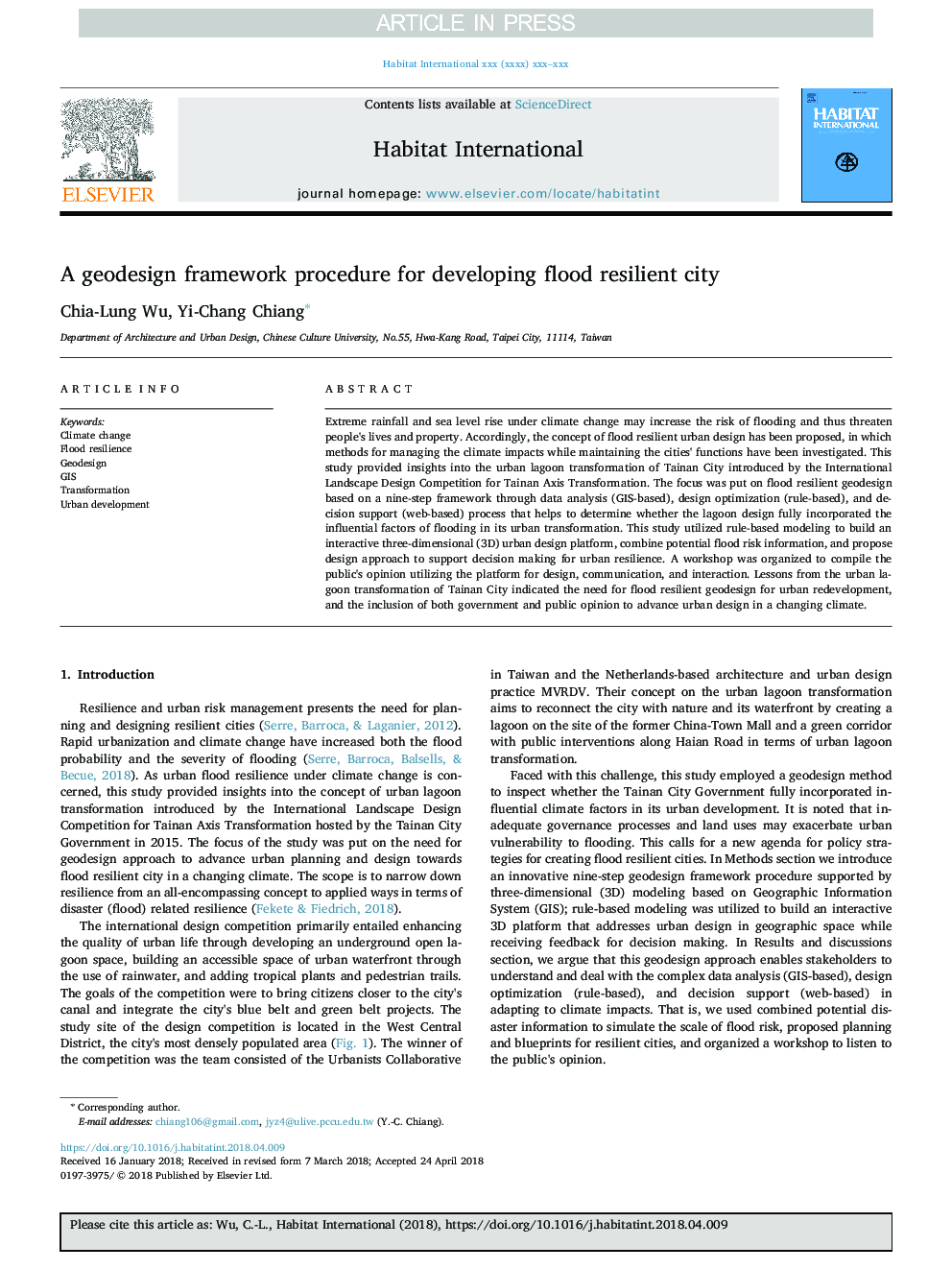| Article ID | Journal | Published Year | Pages | File Type |
|---|---|---|---|---|
| 7455061 | Habitat International | 2018 | 12 Pages |
Abstract
Extreme rainfall and sea level rise under climate change may increase the risk of flooding and thus threaten people's lives and property. Accordingly, the concept of flood resilient urban design has been proposed, in which methods for managing the climate impacts while maintaining the cities' functions have been investigated. This study provided insights into the urban lagoon transformation of Tainan City introduced by the International Landscape Design Competition for Tainan Axis Transformation. The focus was put on flood resilient geodesign based on a nine-step framework through data analysis (GIS-based), design optimization (rule-based), and decision support (web-based) process that helps to determine whether the lagoon design fully incorporated the influential factors of flooding in its urban transformation. This study utilized rule-based modeling to build an interactive three-dimensional (3D) urban design platform, combine potential flood risk information, and propose design approach to support decision making for urban resilience. A workshop was organized to compile the public's opinion utilizing the platform for design, communication, and interaction. Lessons from the urban lagoon transformation of Tainan City indicated the need for flood resilient geodesign for urban redevelopment, and the inclusion of both government and public opinion to advance urban design in a changing climate.
Related Topics
Social Sciences and Humanities
Social Sciences
Development
Authors
Chia-Lung Wu, Yi-Chang Chiang,
